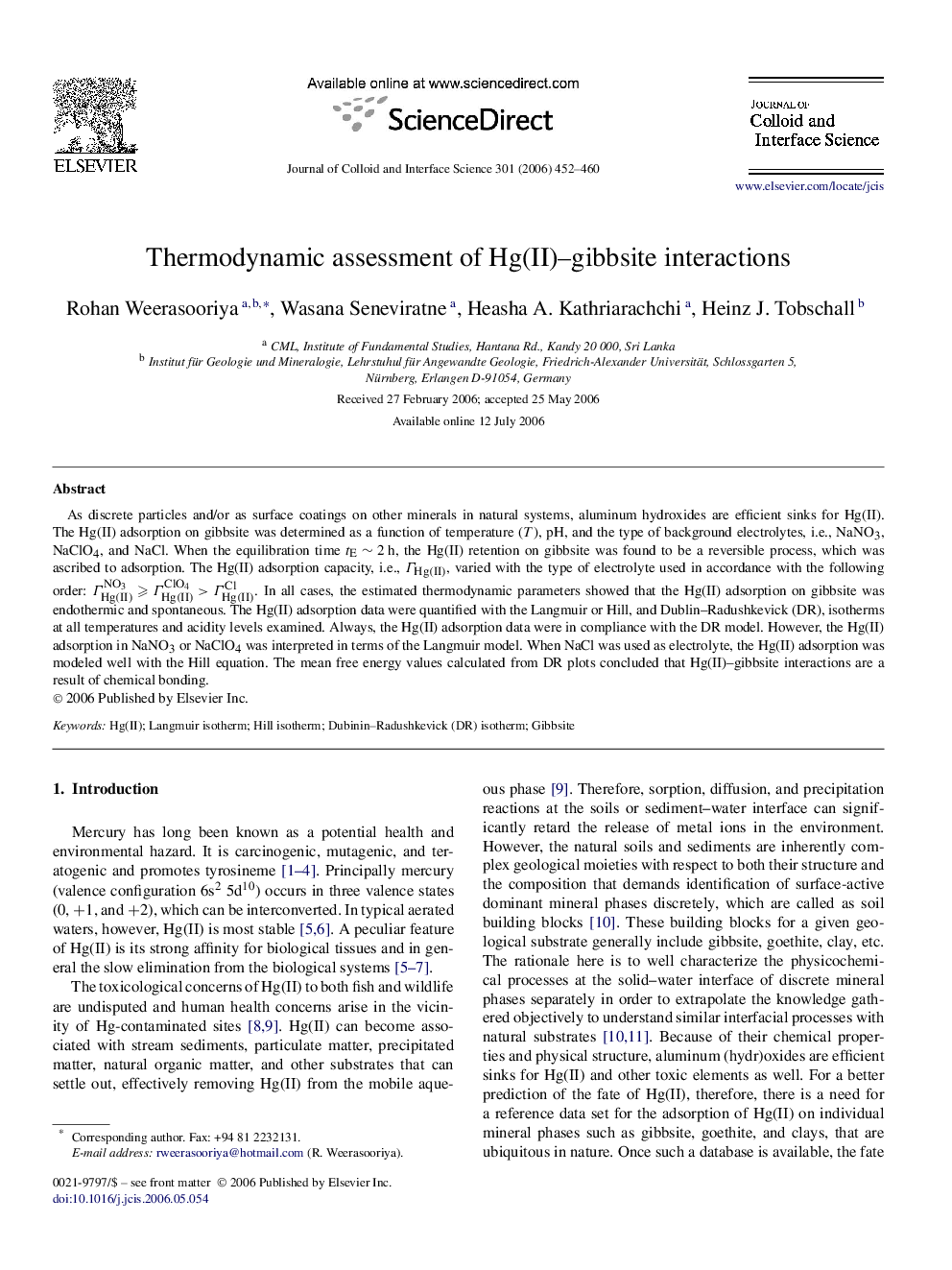| Article ID | Journal | Published Year | Pages | File Type |
|---|---|---|---|---|
| 612605 | Journal of Colloid and Interface Science | 2006 | 9 Pages |
As discrete particles and/or as surface coatings on other minerals in natural systems, aluminum hydroxides are efficient sinks for Hg(II). The Hg(II) adsorption on gibbsite was determined as a function of temperature (T), pH, and the type of background electrolytes, i.e., NaNO3, NaClO4, and NaCl. When the equilibration time tE∼2 htE∼2 h, the Hg(II) retention on gibbsite was found to be a reversible process, which was ascribed to adsorption. The Hg(II) adsorption capacity, i.e., ΓHg(II)ΓHg(II), varied with the type of electrolyte used in accordance with the following order: ΓHg(II)NO3⩾ΓHg(II)ClO4>ΓHg(II)Cl. In all cases, the estimated thermodynamic parameters showed that the Hg(II) adsorption on gibbsite was endothermic and spontaneous. The Hg(II) adsorption data were quantified with the Langmuir or Hill, and Dublin–Radushkevick (DR), isotherms at all temperatures and acidity levels examined. Always, the Hg(II) adsorption data were in compliance with the DR model. However, the Hg(II) adsorption in NaNO3 or NaClO4 was interpreted in terms of the Langmuir model. When NaCl was used as electrolyte, the Hg(II) adsorption was modeled well with the Hill equation. The mean free energy values calculated from DR plots concluded that Hg(II)–gibbsite interactions are a result of chemical bonding.
Graphical abstractAs discrete particles and/or as surface coatings on other minerals in natural systems, aluminum hydroxide are efficient sinks for Hg(II). The Hg(II) adsorption on gibbsite was determined as a function of temperature (T), pH and the type of background electrolytes, i.e. NaNO3, NaClO4, and NaCl. At short time periods of equilibration the Hg(II) retention on gibbsite was reversible. The Hg(II) adsorption capacity, i.e. ΓHg(II)ΓHg(II) varied with the type of electrolyte used. Estimated thermodynamic parameters of Hg(II) adsorption show that the overall adsorption was endothermic and spontaneous. As shown in the figure for chemical data in NaClO4 (similar results were obtained in NaCl, and NaNO3) always Hg(II) adsorption on gibbsite was in compliance with Dublin–Radushkevick (DR) model. From the DR plots apparent free energy of adsorption, E, was also calculated. It was shown that E was a function of the background electrolyte and the system pH. In most cases, the EpH4
